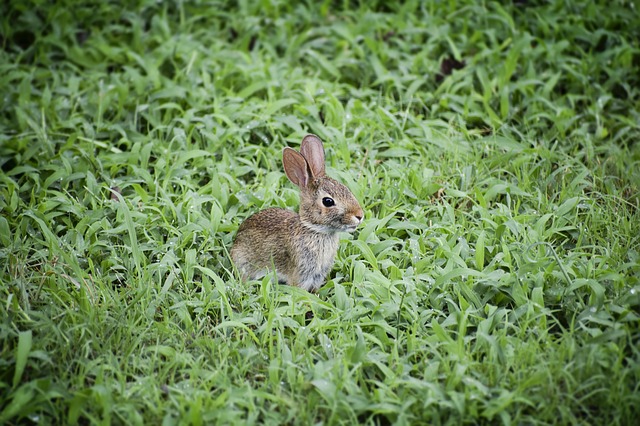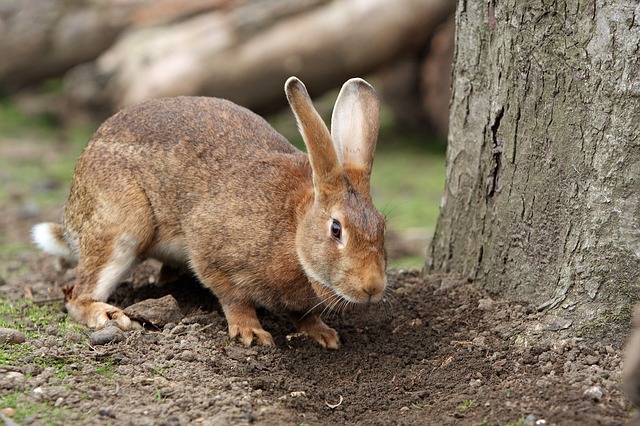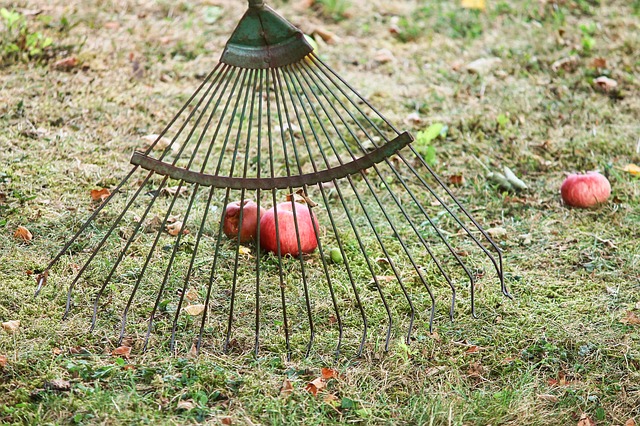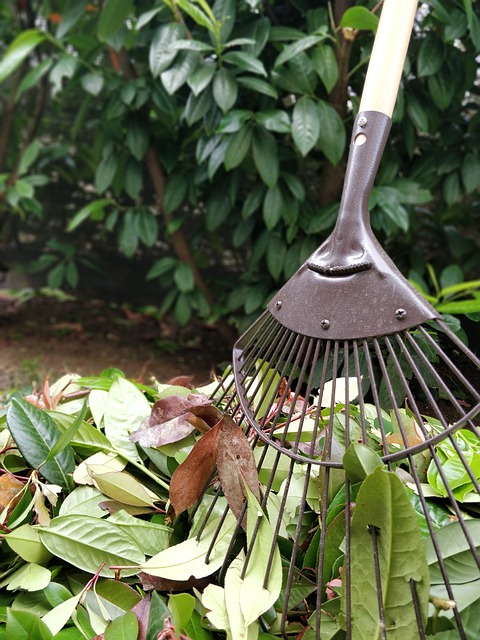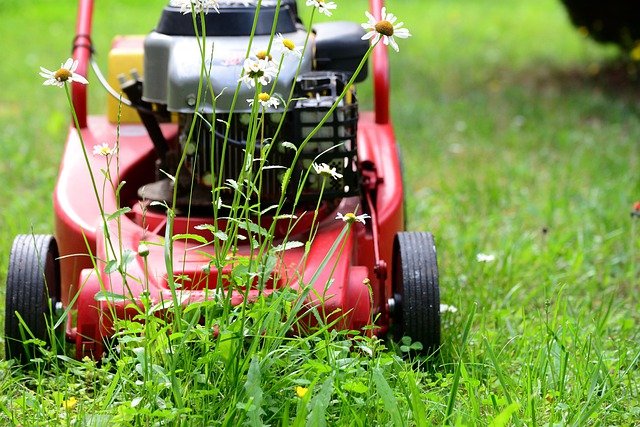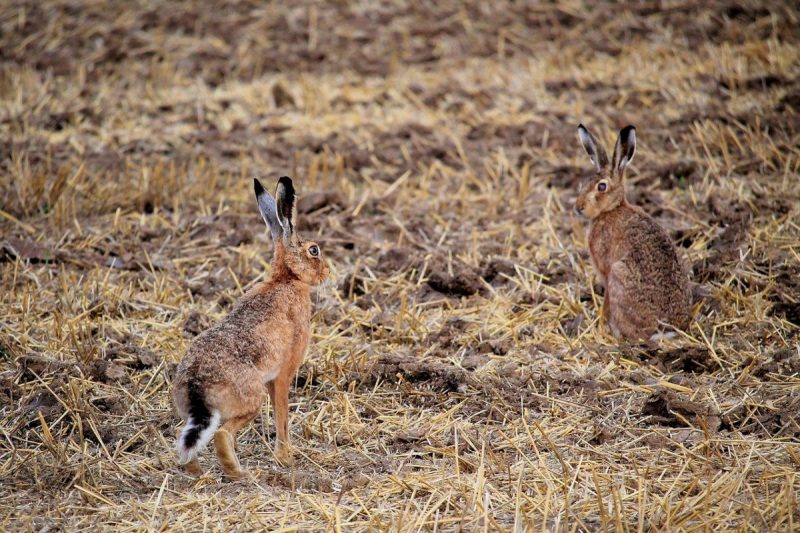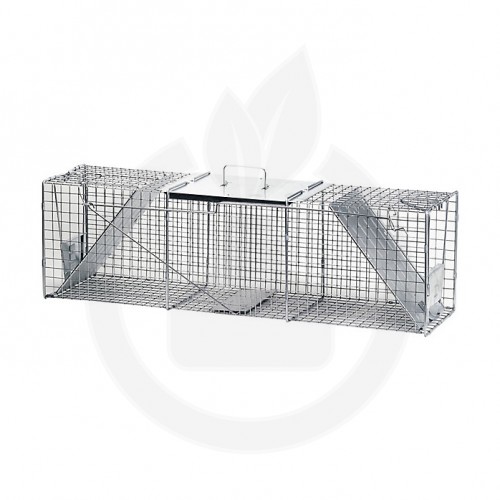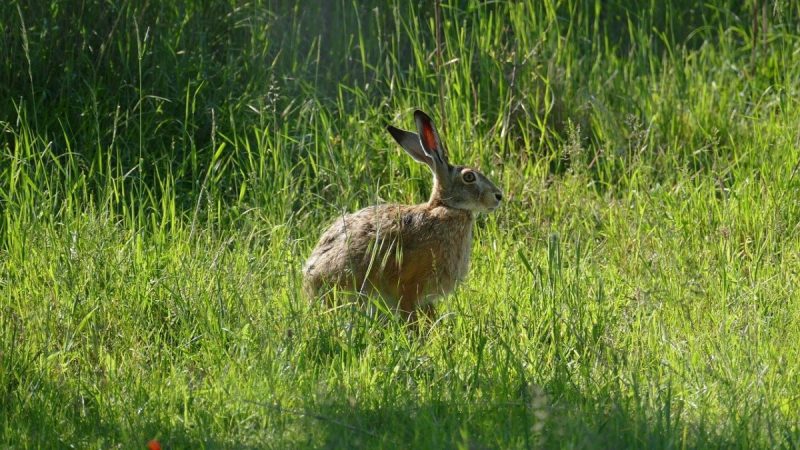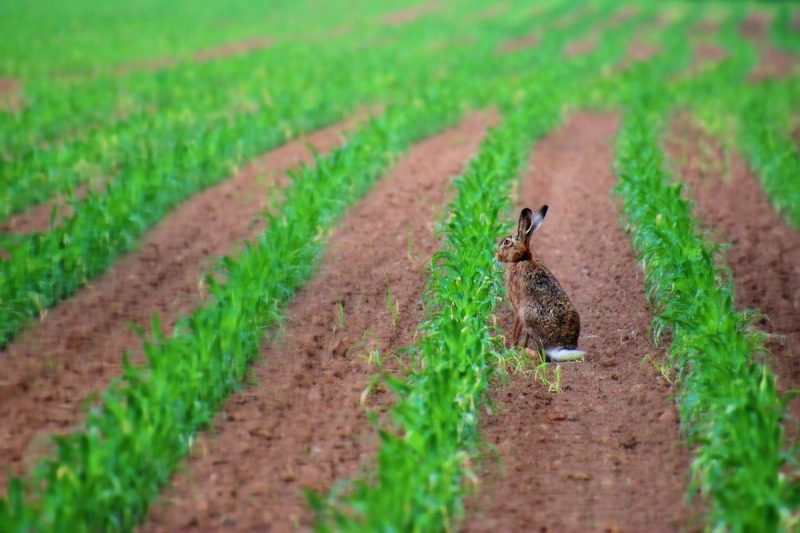How to get rid of Rabbits
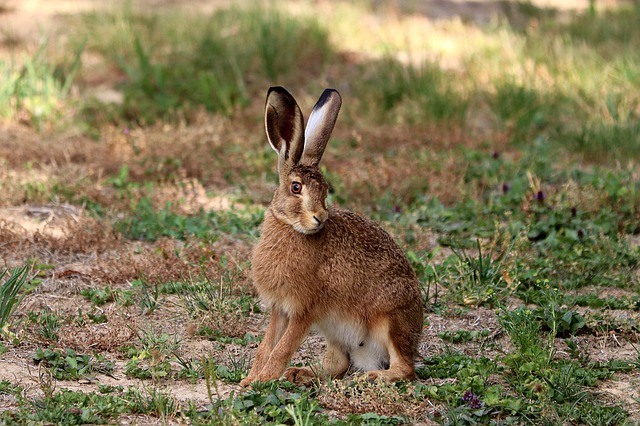
Rabbits are small to medium-sized mammals that belong to the Leporidae family. Often they enter people’s gardens and orchards, looking for food or shelter (in sheds). Thus, rabbits will be kept away from the household or the space that needs to be protected, through a series of safe methods, without harming them in any way.
Signs of the presence of rabbits
In order to be able to choose the most suitable method of removing rabbits, it is recommended to identify the areas they usually frequent, as well as the type of damage they cause in gardens/orchards. In the case of rabbits, the damages differ depending on the season.
Spring/Summer:
- They eat grass, clover, alfalfa;
- They can cause damage to beans, peas, cabbage and lettuce crops;
- They gnaw the seedlings;
- They sometimes steal flowers from the garden.
Autumn/Winter:
- They can gnaw the bark of young trees;
- They occupy other animals’ burrows;
- They can gnaw woody plants and shrubs;
- They break the branches in the garden.
In general, rabbits prefer areas with tall grass, various plant debris and plants with a luxuriant growth, which offer them shelter and protection. Therefore, by undertaking certain measures, the respective space will become less welcoming for rabbits and will not attract them in any way.
Among the measures that can be applied, we mention:
- Cutting the lawn/grass regularly;
- Raking the leaves;
- Cutting/mowing the abundant vegetation;
- Cleaning/removing the piles of plant debris, wood, etc.
- Identifying and then filling abandoned burrows on the property/yard with gravel, as rabbits can use them, especially when it is cold or rainy.
Thus, after you have identified the areas where the rabbits have caused damage, as well as the period in which they appear, it is recommended to choose the optimal removal method, depending on the situation. The choice of the appropriate method is influenced by the number of rabbits in the respective perimeter and even by the season in which they appear.
Since rabbits can be present for a longer period of time in a certain space, for their removal/repelling to have a high degree of efficiency in the long term, it is best to use multiple methods. Traps, repellants, as well as specific cannons can be used to control rabbits (in the case of orchards, agricultural land).
The use of traps
It is recommended to use traps to capture rabbits on a property, if they are present in small numbers or in winter, when food sources are limited and the bait inside the trap attracts them even more.
The use of traps is a fairly easy method and it involves:
- Placing them in the areas where you noticed the most damage;
- Using suitable baits;
- The effective preparation of the trap for capture and its constant monitoring;
- The relocation of the captured rabbits will be done according to the legal provisions in force.
For an efficient capture, the traps will be placed in the area where the rabbits appear most frequently or where the most damage is present. Rabbits often spend their time in transition spaces, where sheltered land meets open land. Among such spaces we mention: hedges, shrubs, fences, bushes, piles of wood/vegetable remains, areas with vegetation/tall grass.
Additionally:
- Only in rare cases do rabbits travel long distances on open ground, and thus, it is recommended to avoid placing traps in a remote area, where the rabbits would have to travel a considerable distance to reach it;
- If a rabbit den is identified, the trap will be placed a few meters away from the entrance.
Recommended products
-
You can find products on a different store
Change Store -
You can find products on a different store
Change Store -
You can find products on a different store
Change Store -
You can find products on a different store
Change Store -
You can find products on a different store
Change Store -
You can find products on a different store
Change Store -
You can find products on a different store
Change Store -
You can find products on a different store
Change Store -
You can find products on a different store
Change Store -
You can find products on a different store
Change Store -
You can find products on a different store
Change Store -
You can find products on a different store
Change Store -
You can find products on a different store
Change Store -
You can find products on a different store
Change Store -
You can find products on a different store
Change Store -
You can find products on a different store
Change Store -
You can find products on a different store
Change Store -
You can find products on a different store
Change Store -
You can find products on a different store
Change Store -
You can find products on a different store
Change Store -
You can find products on a different store
Change Store -
You can find products on a different store
Change Store -
You can find products on a different store
Change Store -
You can find products on a different store
Change Store
At the same time, baits will be used inside the trap. Rabbits are herbivores and feed mainly on grass, various green leaves, roots and some fruits. Thus, you can use: apples, carrots, lettuce, etc.
Additionally:
- In the warm months, when food sources are varied, fruits and vegetables such as apples and carrots can be used;
- In the winter months, it is advisable to avoid using baits with a high water content, which are thus prone to freezing. It is recommended to use dehydrated apples or dried alfalfa.
After choosing the bait, an important step is its positioning inside the trap.
The correct placement of the bait ensures:
- attracting the rabbit completely inside the trap;
- the quick release of the trap when the animal enters.
The trap will be placed according to its type (with 1 entrance or 2 entrances).
In the case of a trap with a single entrance, the bait will be placed towards its end, right behind the trigger, as far as possible from the walls of the trap, to prevent the rabbits from reaching it from the outside.
In the case of traps with two entrances, the bait is recommended to be placed in the middle of it, to encourage the rabbits to trigger the mechanism.
It is recommended to wear gloves to avoid transferring your scent to the trap/bait, as any trace of human scent can discourage the rabbit from entering the trap.
Recommended products
-
You can find products on a different store
Change Store -
You can find products on a different store
Change Store -
You can find products on a different store
Change Store -
You can find products on a different store
Change Store -
You can find products on a different store
Change Store -
You can find products on a different store
Change Store -
You can find products on a different store
Change Store -
You can find products on a different store
Change Store -
You can find products on a different store
Change Store -
You can find products on a different store
Change Store -
You can find products on a different store
Change Store -
You can find products on a different store
Change Store -
You can find products on a different store
Change Store -
You can find products on a different store
Change Store -
You can find products on a different store
Change Store -
You can find products on a different store
Change Store -
You can find products on a different store
Change Store -
You can find products on a different store
Change Store -
You can find products on a different store
Change Store -
You can find products on a different store
Change Store -
You can find products on a different store
Change Store -
You can find products on a different store
Change Store -
You can find products on a different store
Change Store -
You can find products on a different store
Change Store
Placing the traps
They will be placed according to the manufacturer’s recommendations, depending on the chosen product. At the same time, they will be placed in the areas where the most damage caused by the rabbits is observed (on a straight, flat surface).
Remember:
- Before using a trap, make sure you understand and respect the legal provisions that regulate the capture of animals using traps;
- It is not recommended to keep wild rabbits as pets, as they can be carriers of various diseases transmissible to humans or other pets.
Trap monitoring
After placing the trap, it is important to monitor it closely, to be able to observe the rabbit as soon as it has been captured. Rabbits can quickly become hungry if they are neglected inside the trap, so they must be released as soon as possible.
Captured rabbits
After the rabbit is captured, it is recommended to use protective gloves when handling the trap, in order to prevent the risk of being bitten, as well as of contacting any disease. The subsequent relocation of the captured rabbits will be done at a certain distance, according to the legal provisions in force. After its release, it is recommended to disinfect the trap to remove any human smell, as well as to prevent the risk of spreading any disease.
Using repellents
To keep rabbits away from the property, it is recommended to use products with a repellent action. Thus, after identifying the areas where they have caused damage and the habits they have in a certain space, it is recommended to use a repellent suitable for your needs. It is important not to focus only on the affected areas, but to take preventive measures to ensure that the entire perimeter is protected. Rabbits quickly adapt to environmental changes and once they are removed from a certain area, they will head towards wild ones.
In addition to the periodic application of repellents, certain measures are also very important, so that the respective space does not represent an especially favorable environment for rabbits. Respectively, the grass/lawn will be cut periodically, plant debris will be cleaned, the leaves will be raked, the abundant vegetation will be cut/trimmed, etc.
Depending on the product, repellents can be liquid, in the form of granules or powder. They will be applied/used in accordance with the manufacturer’s recommendations.
Recommended products
-
You can find products on a different store
Change Store -
You can find products on a different store
Change Store -
You can find products on a different store
Change Store -
You can find products on a different store
Change Store -
You can find products on a different store
Change Store -
You can find products on a different store
Change Store -
You can find products on a different store
Change Store -
You can find products on a different store
Change Store -
You can find products on a different store
Change Store -
You can find products on a different store
Change Store -
You can find products on a different store
Change Store -
You can find products on a different store
Change Store -
You can find products on a different store
Change Store -
You can find products on a different store
Change Store -
You can find products on a different store
Change Store -
You can find products on a different store
Change Store -
You can find products on a different store
Change Store -
You can find products on a different store
Change Store -
You can find products on a different store
Change Store -
You can find products on a different store
Change Store -
You can find products on a different store
Change Store -
You can find products on a different store
Change Store -
You can find products on a different store
Change Store -
You can find products on a different store
Change Store
Using cannons against rabbits
They are devices that emits loud (explosive) noises, used for the safe removal of rabbits from agricultural crops, farms and other open spaces. As a rule, the cannon is powered by a gas cylinder and works on the basis of a piezoelectric motor, being independent of any energy source. Depending on the type of device, the interval and frequency of detonations can be programmed or are preset.
Recommended products
-
You can find products on a different store
Change Store -
You can find products on a different store
Change Store -
You can find products on a different store
Change Store -
You can find products on a different store
Change Store -
You can find products on a different store
Change Store -
You can find products on a different store
Change Store -
You can find products on a different store
Change Store -
You can find products on a different store
Change Store -
You can find products on a different store
Change Store -
You can find products on a different store
Change Store -
You can find products on a different store
Change Store -
You can find products on a different store
Change Store -
You can find products on a different store
Change Store -
You can find products on a different store
Change Store -
You can find products on a different store
Change Store -
You can find products on a different store
Change Store -
You can find products on a different store
Change Store -
You can find products on a different store
Change Store -
You can find products on a different store
Change Store -
You can find products on a different store
Change Store -
You can find products on a different store
Change Store -
You can find products on a different store
Change Store -
You can find products on a different store
Change Store -
You can find products on a different store
Change Store
In conclusion, depending on the situation (space), when opting for the removal/repelling of rabbits, it is advisable to choose the optimal methods (traps, repellents, cannons, etc.), without causing them any harm. At the same time, it is recommended to undertake the mentioned measures, so that the respective area does not attract them in a special way.














































































































































































































































































































































































































































